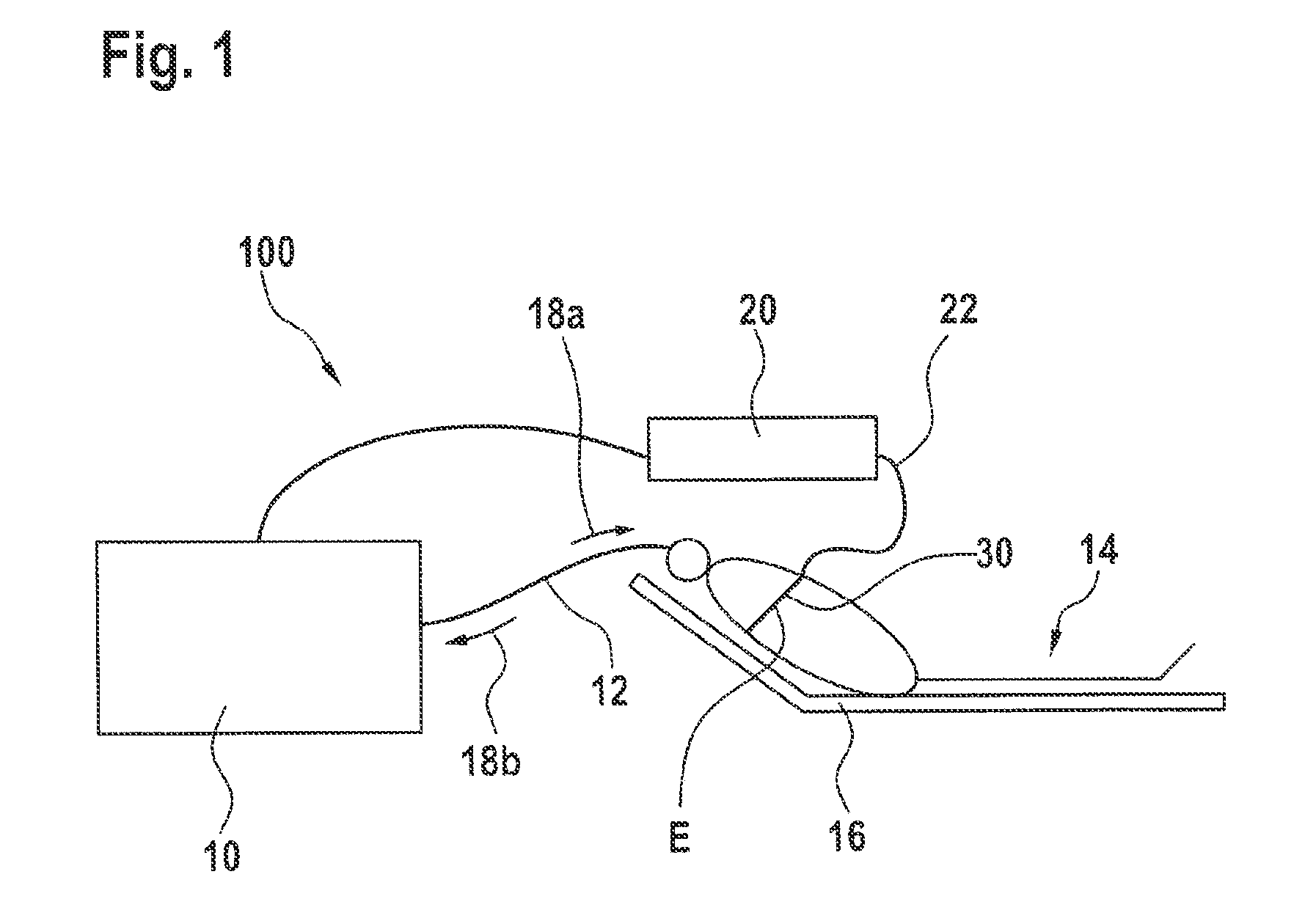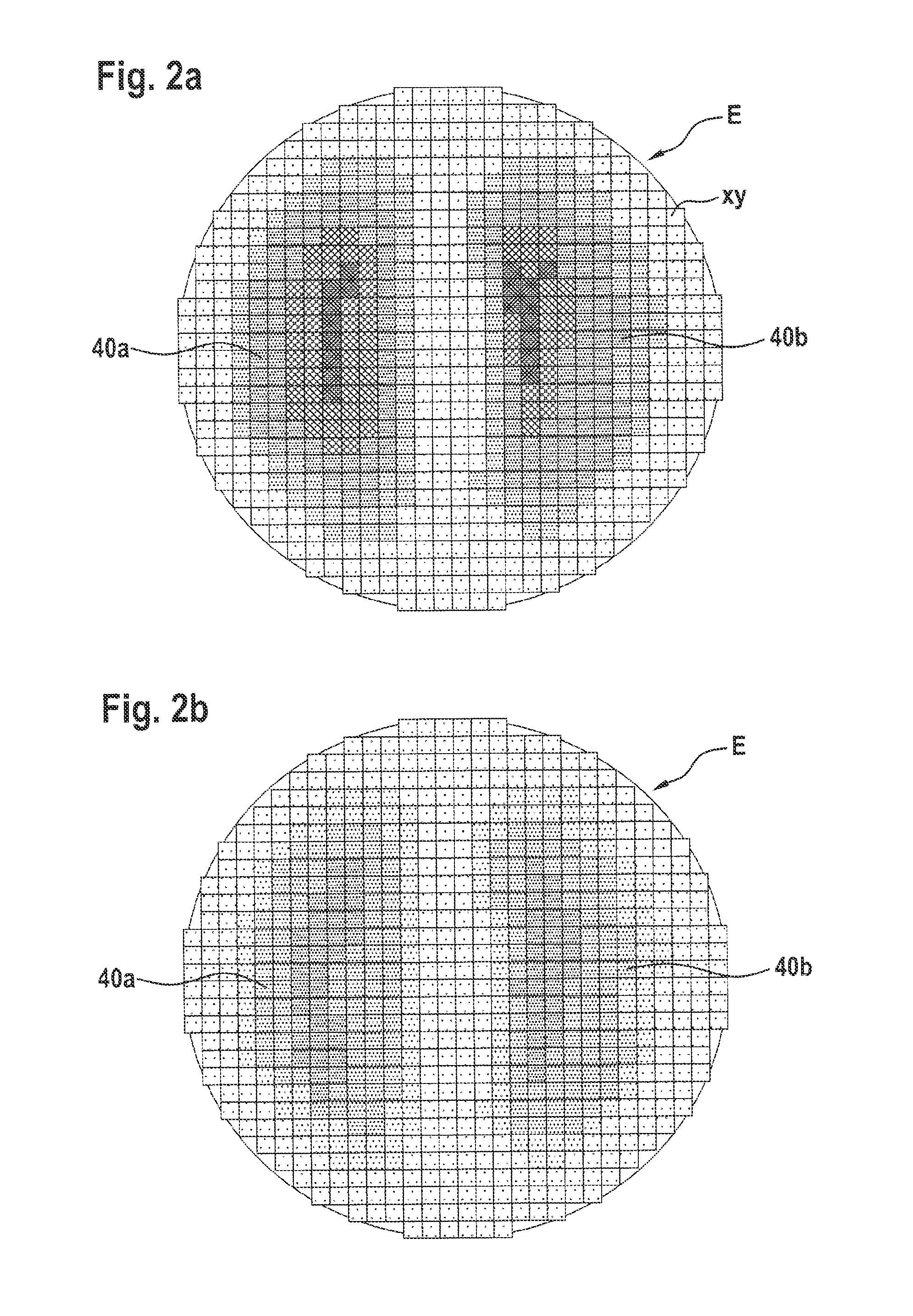System for automated adjustment of a pressure set by a respiration device
a technology of automatic adjustment and pressure, which is applied in the direction of valve operating means/releasing devices, applications, diagnostic recording/measuring, etc., can solve the problems of oxygen saturation decline, severe impairment of the functional residual capacity of the lungs, and collapse of alveoli parts, etc., and achieve the effect of increasing the level of the peep
- Summary
- Abstract
- Description
- Claims
- Application Information
AI Technical Summary
Benefits of technology
Problems solved by technology
Method used
Image
Examples
Embodiment Construction
[0057]FIG. 1 shows, in a highly schematic representation and in the form of a block diagram, the essential elements of a respiration device 100 comprising a respirator 10 for generating breathing gas flows and breathing pressures, respectively, and for controlling breathing, as well as an electrical impedance (EIT) arrangement 20. The EIT arrangement serves to detect values of the electrical impedance in the tissue of a patient, outlined schematically at 14, along a cross-section through the thorax of the respirated patient 14, indicated with the letter E in FIG. 1 and extending from the dorsal to the ventral side in the present example. From the detected data, the EIT arrangement 20 calculates images reflecting the course of the electrical impedance across the thoracic cross-section E.
[0058]The respiration device 100 is shown in FIG. 1 in a state with intubated windpipe (trachea) of the respirated patient, using a respiration hose 12. The patient 14 is lying in a supine position in...
PUM
 Login to View More
Login to View More Abstract
Description
Claims
Application Information
 Login to View More
Login to View More - Generate Ideas
- Intellectual Property
- Life Sciences
- Materials
- Tech Scout
- Unparalleled Data Quality
- Higher Quality Content
- 60% Fewer Hallucinations
Browse by: Latest US Patents, China's latest patents, Technical Efficacy Thesaurus, Application Domain, Technology Topic, Popular Technical Reports.
© 2025 PatSnap. All rights reserved.Legal|Privacy policy|Modern Slavery Act Transparency Statement|Sitemap|About US| Contact US: help@patsnap.com



